Beneficial Predators You Should Let Live In Your Garden
When you’re growing organically outdoors, you will see bugs in your garden. Some of them are bad and should be removed; however, some are good and should be left alone.
There are several things that the presence of beneficial predators tell you. Beneficial predators will only show up if there is a food source for them, so if you see them, you know you have other bugs in your garden. The presence of living things like beneficial predators also allows a plant to be exposed to a more natural environment, which is the goal in organic gardening.
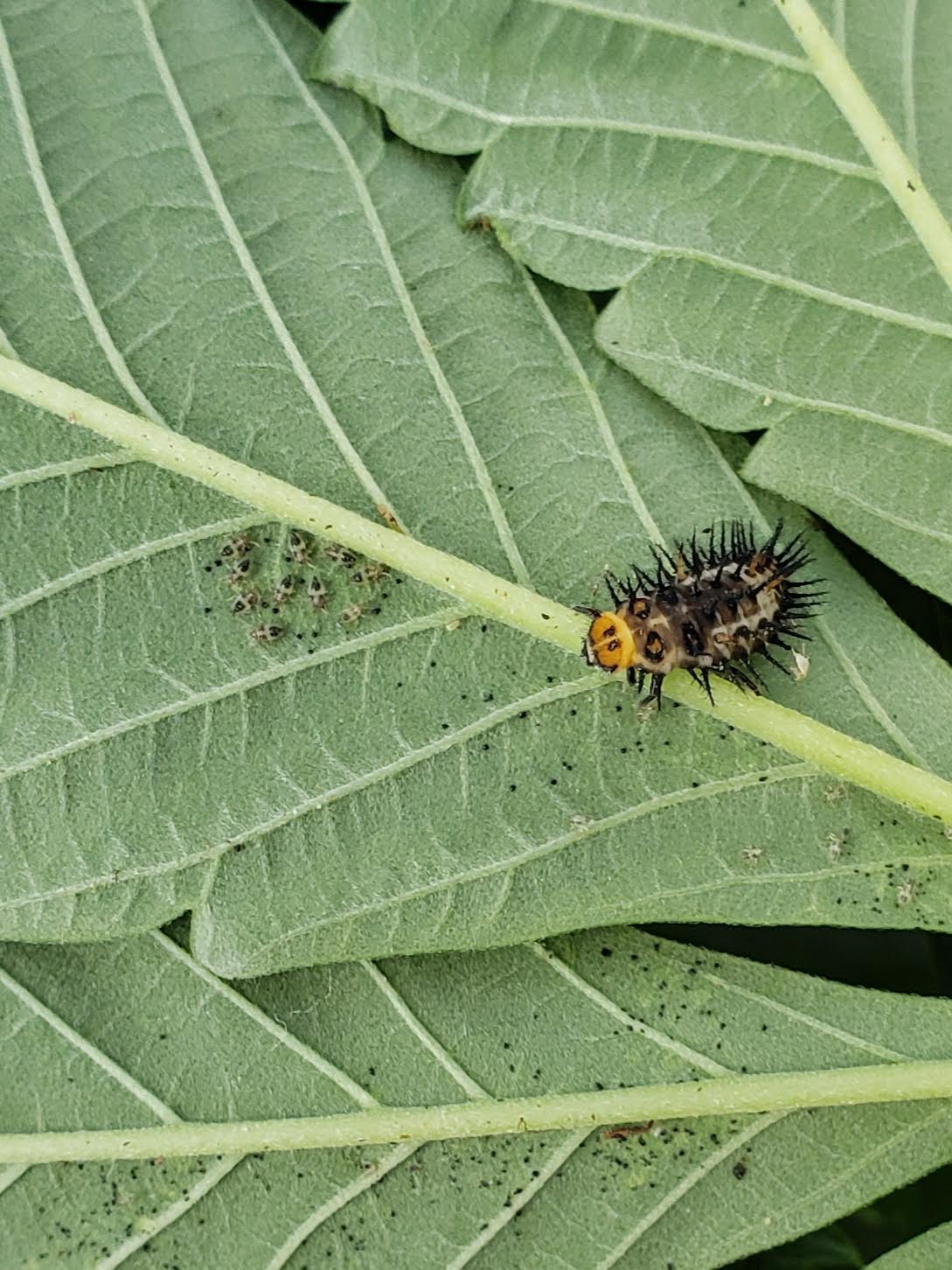 A baby lady beetle checking out a group of lacebug babies
Due to the warmer temperatures, summertime is the most challenging season to grow outdoors, especially here in Hawaii, one of the main reasons being that there is an increased number of pests. However, one of the great things about growing organically is that you allow your plants to also be exposed to beneficial predators that are native or accustomed to your specific location.
The following are some common beneficial predators found in Hawaii gardens (and most gardens) that should be employed upon arrival:
A baby lady beetle checking out a group of lacebug babies
Due to the warmer temperatures, summertime is the most challenging season to grow outdoors, especially here in Hawaii, one of the main reasons being that there is an increased number of pests. However, one of the great things about growing organically is that you allow your plants to also be exposed to beneficial predators that are native or accustomed to your specific location.
The following are some common beneficial predators found in Hawaii gardens (and most gardens) that should be employed upon arrival:
Ladybugs
Pictured is the metallic blue lady beetle (Curinus coeruleus) that is on constant duty in any garden they are found in. They come and go as they please and work around the clock. Each lady beetle can eat up to 100 mites per day, and also targets other pests, like mealybugs, aphids, and whiteflies.
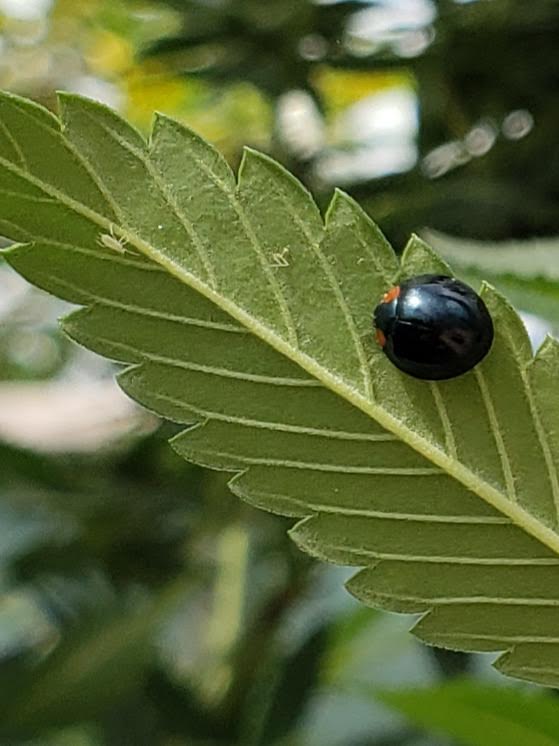 A perfect form of defense, natural predators are worth having on duty in your garden
A perfect form of defense, natural predators are worth having on duty in your garden
These predators are also found on companion plants, like the haole koa tree and cilantro plant, which keep lady beetles around even when there is little food to be found in the garden. It’s important to know what certain predators look like so you know whether it’s a friend or foe. Baby ladybugs, for example, look like they might be a pest, but they are indeed a predator.
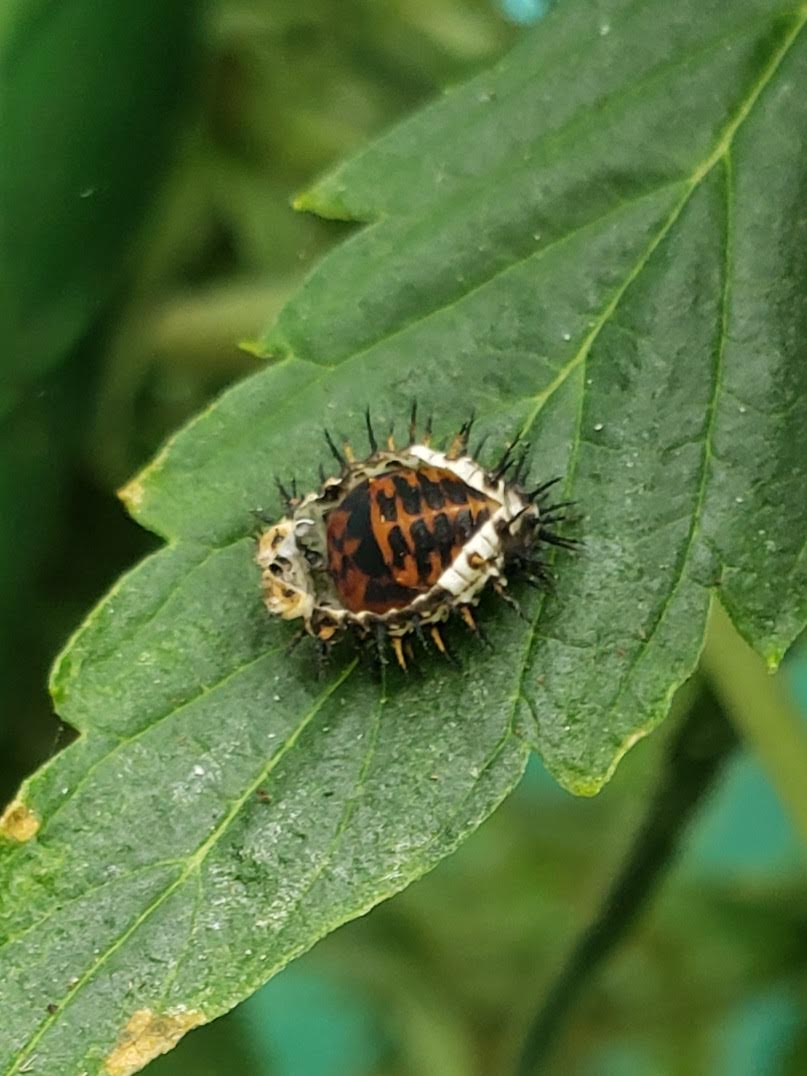 The stage before a baby lady beetle turns into an adult
The stage before a baby lady beetle turns into an adult
- Companions - caraway, cilantro, cosmos, dill, fennel, scented geraniums, yarrow
Praying Mantis
Praying mantis are one of the best predators to have in a garden as they are precise hunters and have strong appetites. They will eat moths, mosquitos, roaches, aphids, flies, and even small rodents. Many people also believe they are good luck. They will patrol plants, areas in a greenhouse, and areas surrounding a garden and will swiftly eliminate any pest they find.
- Companions - caraway, dill, fennel, marigold, raspberry family, roses, wild celery, yarrow
Geckos
Like praying mantis, geckos also target larger prey like moths, crickets, and flies. They can be found hunting pests day and night. They like to climb on branches all throughout a plant, rest on pots, and even climb up the walls of greenhouses hunting for food. They are great for pest control, but also because they climb throughout a plant’s branches, helping to strengthen them.
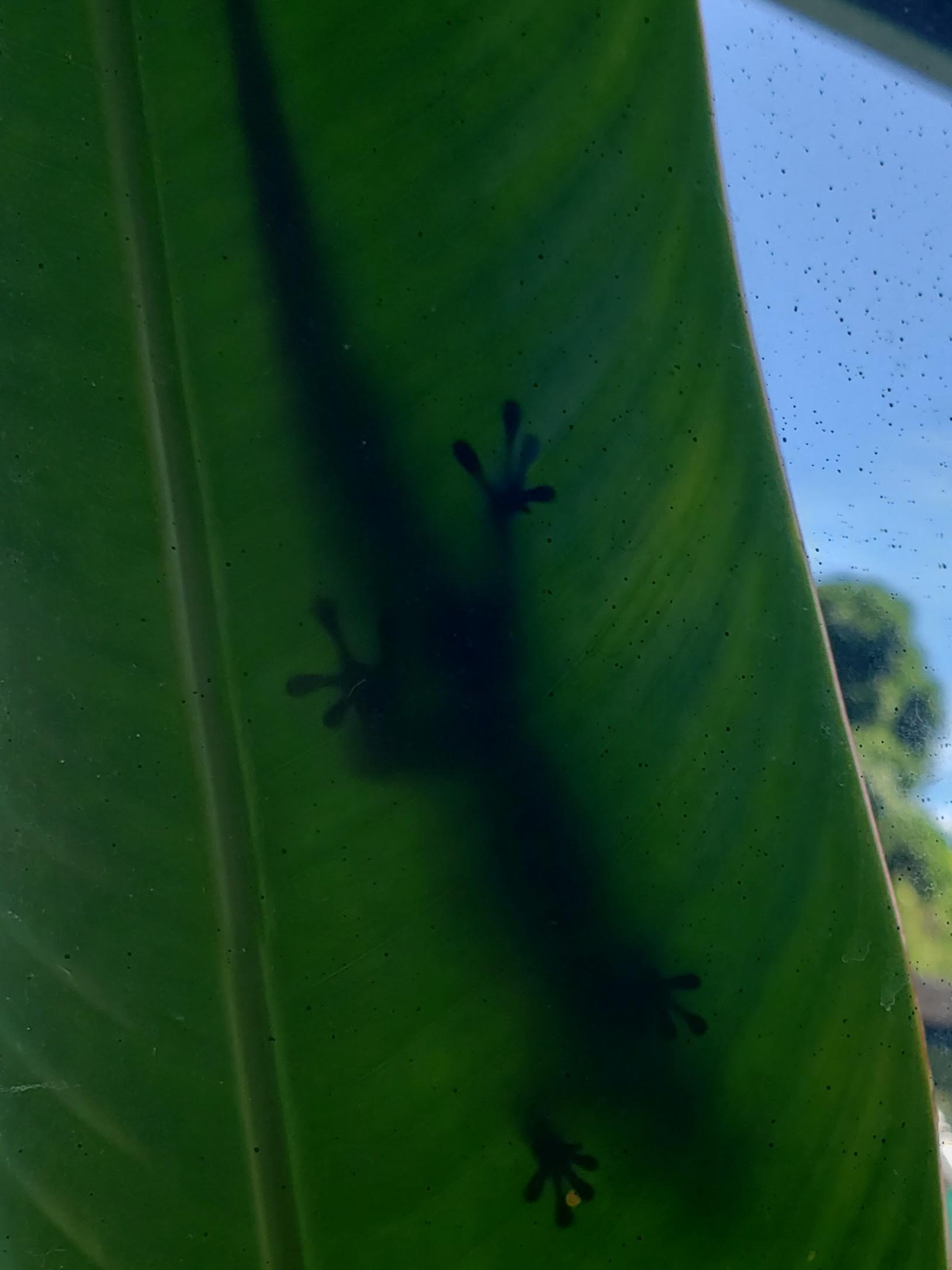 Hawaiian Security: Geckos target larger prey and help expose plants to a more natural environment
Hawaiian Security: Geckos target larger prey and help expose plants to a more natural environment
- Companions - ferns, rock/woody areas
Spiders
Not the most loved beneficial predator of all time; however, they are effective at doing their job. Spiders come in all shapes, colors, and sizes and each one brings benefits to a garden. Tiny spiders live at the top and bottom of plants hunting tiny pests while larger spiders can be found surrounding greenhouses eliminating flies and larger insects like moths. We had one banana spider that lived above our tea brewer and caught tons of flies, which were attracted to the brewing tea.
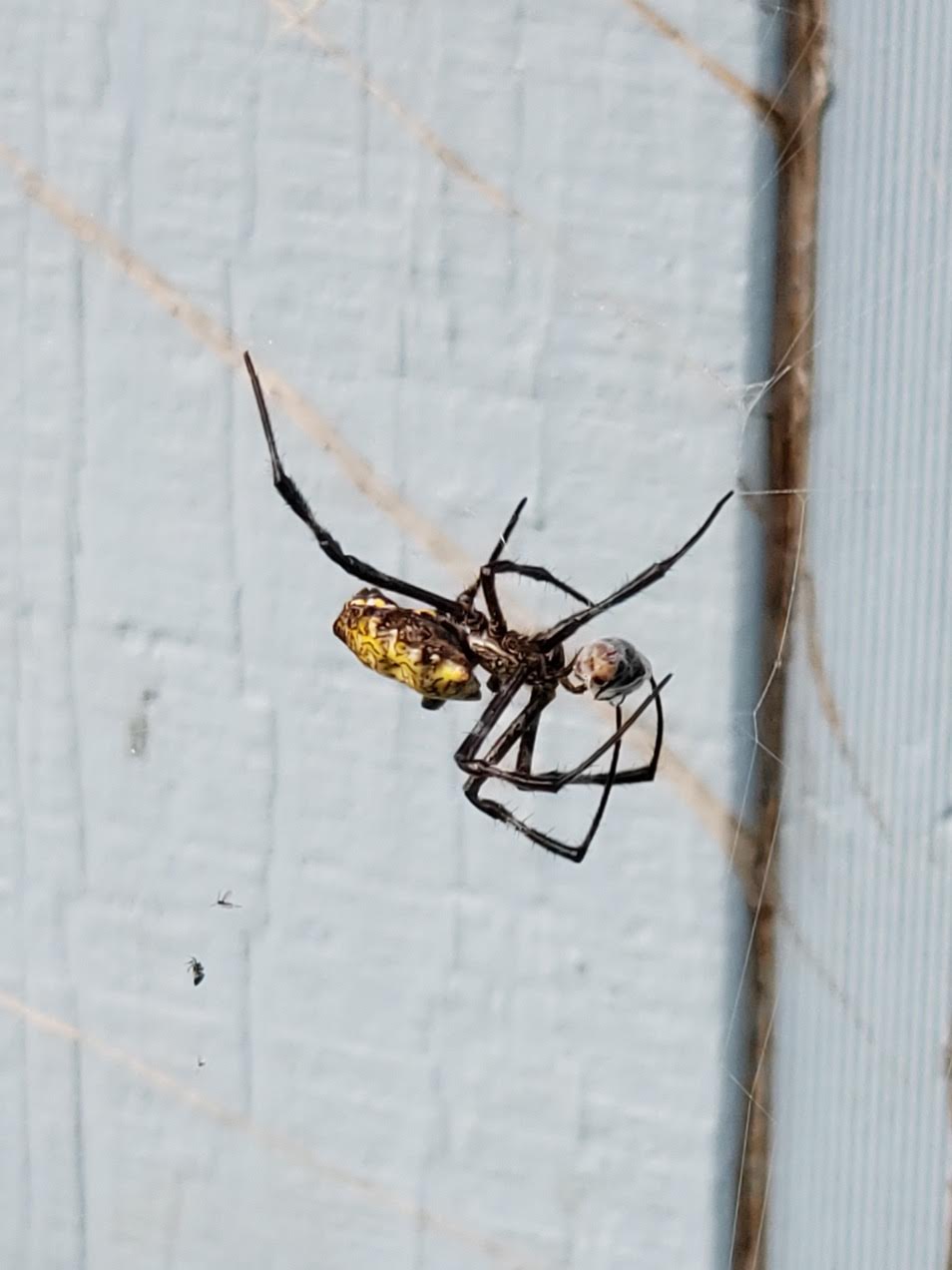 Spiders help eliminate moths, flies, and other pests
Spiders help eliminate moths, flies, and other pests
It's A Win-Win
Other common, naturally existing predators include predatory mites, predatory wasps, and lacewings. Not only do they help keep pests in check, they help expose the plants to a more natural environment, significantly benefitting plant health and growth. Having a variety of predators in your garden allows a variety of pests to be targeted and eliminated. It’s good to learn how to care for predators, or at least how to encourage them to stay, and remember, once their food source is gone, they too will leave.
 A baby lady beetle checking out a group of lacebug babies
Due to the warmer temperatures, summertime is the most challenging season to grow outdoors, especially here in Hawaii, one of the main reasons being that there is an increased number of pests. However, one of the great things about growing organically is that you allow your plants to also be exposed to beneficial predators that are native or accustomed to your specific location.
The following are some common beneficial predators found in Hawaii gardens (and most gardens) that should be employed upon arrival:
A baby lady beetle checking out a group of lacebug babies
Due to the warmer temperatures, summertime is the most challenging season to grow outdoors, especially here in Hawaii, one of the main reasons being that there is an increased number of pests. However, one of the great things about growing organically is that you allow your plants to also be exposed to beneficial predators that are native or accustomed to your specific location.
The following are some common beneficial predators found in Hawaii gardens (and most gardens) that should be employed upon arrival:
 A perfect form of defense, natural predators are worth having on duty in your garden
These predators are also found on companion plants, like the haole koa tree and cilantro plant, which keep lady beetles around even when there is little food to be found in the garden. It’s important to know what certain predators look like so you know whether it’s a friend or foe. Baby ladybugs, for example, look like they might be a pest, but they are indeed a predator.
A perfect form of defense, natural predators are worth having on duty in your garden
These predators are also found on companion plants, like the haole koa tree and cilantro plant, which keep lady beetles around even when there is little food to be found in the garden. It’s important to know what certain predators look like so you know whether it’s a friend or foe. Baby ladybugs, for example, look like they might be a pest, but they are indeed a predator.
 The stage before a baby lady beetle turns into an adult
The stage before a baby lady beetle turns into an adult
 Hawaiian Security: Geckos target larger prey and help expose plants to a more natural environment
Hawaiian Security: Geckos target larger prey and help expose plants to a more natural environment
 Spiders help eliminate moths, flies, and other pests
Spiders help eliminate moths, flies, and other pests